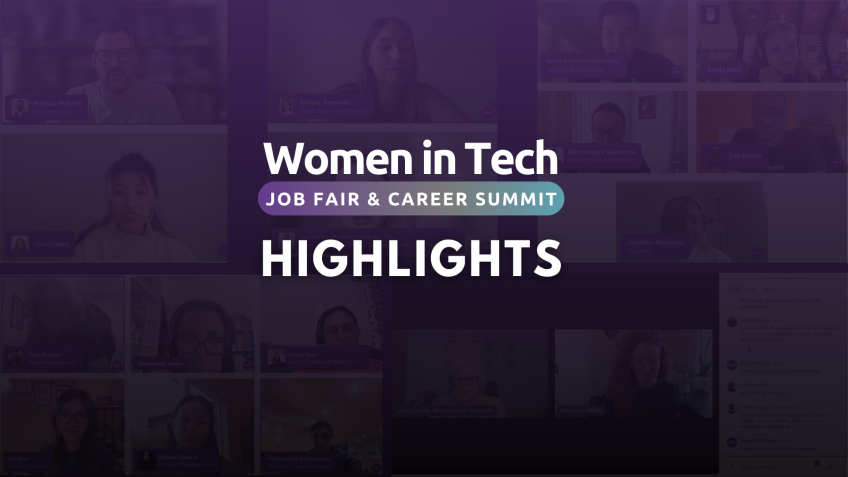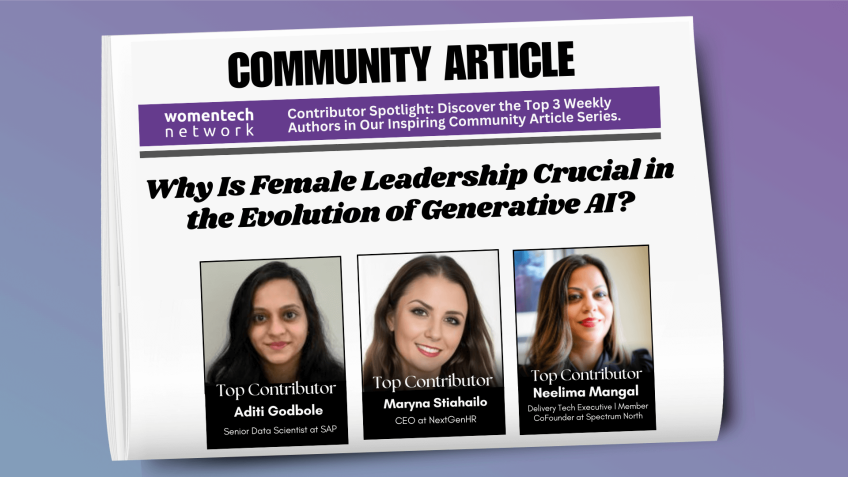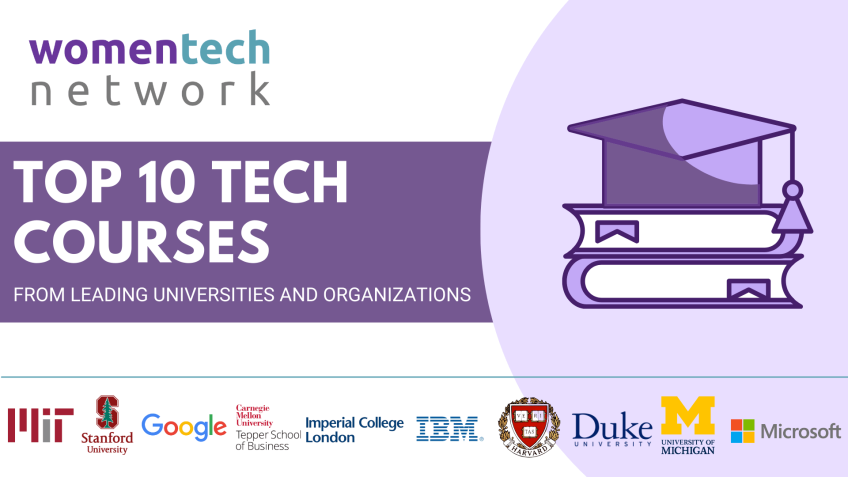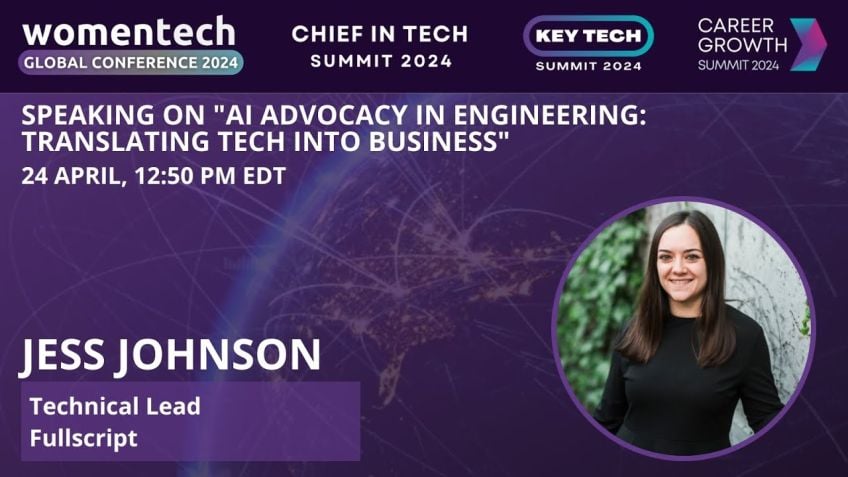By the People, "Jui Khankari By the People, for the People: Why Increasing Diversity in AI is Important & How We Can Achieve It Apply to Speak"
Women in Technology: A Historical Perspective and a Call for Change
As a start, let's ponder over an intriguing question: Are there more women in technology now than there were during the 1900s? While it could be tempting to believe yes, considering vastly more women work outside the home today as compared to then. However, it's startling to learn that the number of women in computing has declined over the past few decades.
Statistical Glimpse into Women in Computing
Women steered their way into the computing workforce, interestingly, soon after the inception of computing post World War I. They majorly represented this sector then, but unfortunately, this trend hasn't carried forward. According to data from 2018, women earned only 18% of computer science degrees in the US, and they occupied merely 22% of AI positions worldwide. The World Economic Forum further emphasizes this dearth of female representation in the AI subdomain of computer science.
Moreover, the presence of minorities in these roles, especially in STEM fields, is alarmingly scanty. The unsettling underside of this gender and ethnic disparity lies in social conditioning and lack of resources and support that begins as early as middle school.
Consequences of Lack of Diversity in AI
What does this inequality in AI mean for society, though? It serves to embed harmful biases into AI algorithms, thus perpetuating harmful stereotypes and discriminatory practices. This happens because AI does exactly what we instruct it to do and learns from the data we provide. It implies that implicit biases, inadvertently included due to a lack of diverse perspectives, can lead to biases in the algorithm's outcomes.
Real-World Ramifications of Bias in AI
Such biases, besides being intrusive and offensive, can pose serious threats. For instance, a misdiagnosing AI algorithm, trained on inadequate or non-diverse data, could jeopardize a patient's health. Hence, it's indispensable to ensure diverse representation in the creation of these AI systems to eliminate such biases.
Strategies to Foster Diversity in AI
The question now arises: How do we achieve this? UNESCO posits that we need equitable, inclusive, and quality digital skills education and training to pave way for diversity. We need to ensure women and minorities have equal access to education and opportunities in AI, enabling them to shape the future of technology.
Ideating Solutions Through Personal Experiences
As a student, I have experienced firsthand that an engaging approach to AI can be effectively used to introduce girls and minorities to this field from an early age. My own journey into AI was guided by mentors who introduced me to the industry’s realities, thus sparking an enduring passion for this field. I have made it my mission to aid this cause through my non-profit initiative, ‘AI Inspire’, which strives to teach students globally about AI and Python coding through workshops, curriculums, and YouTube videos.
Inspirational Stories and Their Impact on Diversity in AI
Through AI Inspire, we have been successful in encouraging diverse people like Beatrice, a health science major from Bolivia, who knew nothing about coding or AI. She attended one of our workshops, which motivated her to take her first coding class at her university. She represents many of our attendees from across the globe whose enthusiasm for learning lights up our workshops.
A Collective Vision for an AI Centered Future
That said, we still have a long way to go. I urge technology professionals worldwide to mentor young aspirants and help us to make, thrive, and innovate in an AI-centred world, regardless of their genders or backgrounds. Because, after all, it's not just about succeeding in AI – but about shaping our future with it too.
Video Transcription
OK, excellent. Let's get started. So before I start my, as I start my presentation, I'd like to start off by asking all of you one question. Are there more women in technology now than there were during the 19 hundreds?Now, you may be wondering just based off of the fact that there are more women working outside of the home now than there were during the 19 hundreds, that there's a greater percentage of women working in technology now than there were during the 19 hundreds. But you'd be surprised to know that that isn't the case. In fact, the number of women in computing has actually declined over the past few decades. In fact, women first entered the computing workforce after computing was invented after world war one. And during this time, women made up a majority of the workforce. However, the number of women in computing has actually declined steadily over the past few decades. In fact, women earned only 18% of computer science degrees in the US in 2018. And they only earned 22% of A I positions um in the US globally. Actually, according to the World Economic Forum. And even fewer participants in the A I subfield of computer science are minorities. So clearly female and minority involvement in STEM fields is decreasing. And the woman and the study published in women in stem found that the reason for decreased female and minority participation in computer science actually starts in middle school. The study found that two thirds of a middle school aged girls indicated an interest in A I.
However, by the time they reached high school, their interest in A I had steadily decreased due to a lack of support and resources. A similar trend was observed in minority students as a study published in the education and researcher found that minority students have been dropping out of stem majors at a higher rate than their peers. To put it simply, males are encouraged to pursue STEM fields while girls and minorities aren't. And this has led to the current disparity in A I, as I mentioned earlier, only 22% of A I professionals globally are. So you may be wondering what's so bad about this lack of diversity. Basically, a lack of diversity in A I means that biases are knowingly encoded into A I algorithms. A report published by unesco denounces how Siri which is a is voice assistant actually responded to verbally abusive comments with, with phrases such as I'd blush if I could unesco highlighted how this flirty response to verbal abuse is incredibly dangerous as it perpetuates the stereotype that women will submit to or even be flattered by verbal abuse.
Similarly, in 2015 Google Photos A I algorithm categorized two African American men as gorillas, serious sexism and Google's racism are just two of the hundreds of examples of racism. Excuse me, a bias present in A I both known and hidden and while these examples are certainly dangerous and even infuriating future biases could even be life threatening. I mean, imagine if an A I algorithm was responsible for diagnosing your skin cancer, but it had never been trained on people who looked like you. Its diagnosis wouldn't be very accurate and that would put your life at risk. So now you may be wondering how did this happen? Is A I evil? The short answer is no, it's not A I does exactly what we tell it to do and it learns exactly from the data that we provide. So it's up to us to provide good data. And by good data, I mean, diverse data as this data can lead to more accurate results because the A I has more examples to learn from. So basically implicit biases such as the ones I talked about were included by accident in these algorithms because the engineers building these algorithms didn't compile a large enough data set.
This clearly highlights why we need to bring more perspectives to the table so that we can assemble these better and more diverse data sets. But how the short answer is we need to encourage more women and minorities to enter A I. But you may be wondering how do we do that? To quote a UNESCO report? We need to ensure equitable, inclusive and high quality digital skills education and training to open pathways for further learning and skill development. In other words, we just need to start including women and minorities in the conversation and the education surrounding the A I SPACE A I is already one of the building blocks of the future. And if that building block is rooted in implicit bias, then our future will be too to combat this lack of diversity. I suggest a multi pronged approach to ensure that girls and minorities are introduced to A I in a fun and engaging way starting at a young age as a student myself. I know that this approach works even though I was an approach to A I at a young age, my parents instilled in me a love of stamp through fun chemistry experiments and trips to the Museum of Science and Industry to dissect c eyes and not, and not only did I instill in myself a a love for stem.
Um after being introduced to A I I was fortunate enough to receive guidance from multiple role models in the field. And not only did they teach me about technical skills, but they also showed me that it's possible to succeed in a male dominated field. They introduced me to their colleagues at Google and Facebook. So I could learn how A I is used in industry and they recommended scholarships and grants that I could apply for as a female in technology learning. A I was simultaneously one of the most challenging and rewarding things that I've ever done. And there were many times that I wanted to quit, but there were also so many times when I was completely amazed by the fact that the A I that I had created had the potential to save lives. One day thanks to the guidance and support of my mentors, I was able to learn about A I. And now I've made it my mission to help other girls and minorities do the same as such. I've started an international initiative designed to teach students of all genders backgrounds and ages about A I I designed to fund workshops, school curriculums and youtube videos that teach the fundamentals of A I and Python coding to students as young as nine years old.
I also started a speaker series to allow students to make their first professional connections to A I mentors in a safe space through my nonprofit, which I call A I inspire because we aim to inspire people to learn about A I I have helped girls like Beatrix who's a college student from Bolivia.
She stumbled across my organization online and she decided to sign up for an A I in biology workshop. Despite not knowing how to code and not even knowing what A I was, even though Beatrice had never coded before, she was pursuing a health sciences degree. And she was interested in learning more about how you could integrate technology with the health sciences. Also, she only spoke Spanish, but that didn't stop me. So for the next four hours I worked with Beatrice in Spanish to take her from typing. Hello World for the first time to coding her very own A I algorithm that detected breast cancer from a Kago data set. Beatrice later emailed me that she took her first coding class at university after attending my workshop. But Beatrice isn't alone in her lack of exposure to A I and to coding in general, we've taught students from Bangladesh in Belgium, from Peru and Pakistan from Saudi Arabia and South Korea. And we've had them tune into our workshops. Most of them have never even heard of A I before, but they're all so eager to learn this diverse cross section of the world threaded together by their common interest and desire to learn about technology holds the key to increasing diversity in A I. And so I made it my mission to essentially get the word out there about A I to integrate it into our common vernacular so that every random person on the street would know its meaning.
And in my mind, even if one person that has attended an A I inspired workshop goes on to enter the A I field. I think I'll have succeeded in my goal. So what can you do? I hope my story as a young female color, per person of color in A I will inspire all of you as tech professionals to mentor and guide other young students to learn about this powerful technology A I is the future. And women and other minorities must have a say in designing this future. We must work together to give people of all genders backgrounds and ages, the tools to not only succeed in but to also thrive innovate and create in an A I centric world. Thank you.





